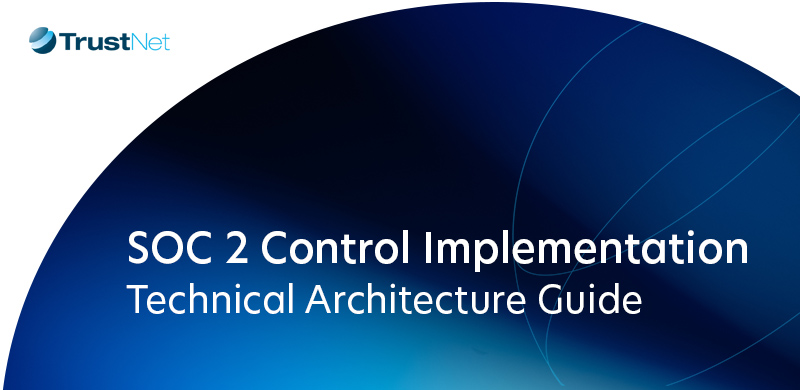Blog SOC 1 and SOC 2 Audit Explained: The Essential Guide for Startups Steering Towards Compliance
SOC 1 and SOC 2 Audit Explained: The Essential Guide for Startups Steering Towards Compliance

Startups in the SaaS, finance, and service provider domains find themselves at a nexus where security and innovation converge. Therefore, SOC 1 and SOC 2 audits are not just advantageous; they are necessary. These thorough assessments reassure regulators, partners, and customers that your business values and adheres to the strictest privacy and data security guidelines.
This article will work as your guide as you navigate the complexity of SOC audits, regardless of whether you’re just starting out with financial data handling processes or trying to strengthen current ones. Keep reading to learn more.
SOC 2 and SOC 1: What’s the Difference?
Organizations, especially those that offer services to other businesses, can use the frameworks for SOC 1 and SOC 2 audits of processes and controls. AICPA, the American Institute of Certified Public Accountants, is in charge of both, although its goals and reporting requirements are distinct.
The focus of SOC 1 reports is internal controls over financial reporting (ICFR). These reports, which focus mostly on a service organization’s capacity to correctly present financial data, are frequently required by clients in sectors where integrity and financial reporting are critical. SOC 1 reports are primarily read by the management of the service organization, user entities, and the auditors of the financial statements of the user entities.
However, SOC 2 is made for a service organization’s security, availability, processing integrity, confidentiality, and privacy controls. SOC 2 covers a wider variety of internal controls and procedures linked to managing and protecting data, as contrast to SOC 1, which is more strictly focused on financial reporting. Technology and cloud computing firms need SOC 2 reports because stakeholders who are concerned about data management, including security and privacy, find them of special interest.
The choice between SOC 1 and SOC 2 reporting will depend on the nature of the service provided and the specific needs of the user entities or stakeholders involved.
For more on our SOC compliance services, Click Here
Who Needs a SOC 1 Audit and a SOC 2 Audit?
The type of services a service organization offers and the requirements or expectations of its clients for controls over financial reporting, security, availability, processing integrity, confidentiality, and privacy will determine whether the business needs a SOC 1 or SOC 2 audit.
Who Needs a SOC 1 Audit?
Service companies whose offerings have a direct impact on their clients’ financial statements must conduct SOC 1 audits. Examples are companies that supply:
-
- Payroll Processing: These businesses take care of computations that are directly related to financial reporting and secure employee financial data.
- Loan Servicing Companies: They manage the payment processing, interest calculations, and other financial activities for loans, impacting the financial health of the borrowing entity.
- Benefits Administrators: They manage retirement accounts, health insurance claims, and other employee benefits that have financial implications for companies.
- SaaS Providers with Financial Impact: Software as a Service (SaaS) providers whose platforms are used for financial transactions or financial reporting need SOC 1 audits to ensure the integrity of the financial data processed by their systems.
A SOC 1 report for these companies lowers the possibility of financial misstatements by reassuring clients that the service provider has strong internal controls over financial reporting.
Who Needs a SOC 2 Audit?
A wider range of service firms that receive, store, or process consumer data should consider conducting SOC 2 audits, particularly where proving a dedication to data security and compliance is crucial. Examples are:
-
- Cloud Computing Services: Cloud services need to have strong controls over data security, availability, and privacy because of their role in processing and storing enormous volumes of data.
- SaaS Providers (Non-Financial Impact): SaaS platforms that may not impact financial reporting directly but handle customer data, requiring stringent controls over data security and privacy.
- Data Centers: These facilities host critical infrastructure and data for multiple businesses, making the assurance of physical and environmental controls imperative for operational integrity and security.
- Managed IT Services: Companies providing IT management services must ensure the confidentiality, integrity, and availability of the systems and data they manage.
SOC 2 audits are essential for businesses in sectors where compliance, data security, and privacy are critical.
Types of SOC 1 and SOC 2 Reports
Both SOC 1 and SOC 2 audits produce Type 1 and Type 2 reports, each of which has a distinct purpose in evaluating the internal controls of a service company.
Businesses need to be aware of these differences when selecting an audit to best meet their objectives and the demands of their clients.
SOC 1 Reports | SOC 1 Type 1:
- Focuses on a point-in-time assessment.
- Evaluates the design of controls relevant to internal control over financial reporting (ICFR).
- This provides assurance that the controls are properly designed to achieve their intended objectives at a specific moment in time.
- Suitable for organizations that need to demonstrate their control environment’s design effectiveness as of a particular date.
SOC 1 Type 2:
- Includes an evaluation over a period of time.
- Assesses both the design and operating effectiveness of controls.
- Offers a higher level of assurance to stakeholders by demonstrating the proper design and the operational effectiveness of controls over time.
- It is ideal for organizations looking to provide ongoing assurance about the effectiveness of their financial control environment.
SOC 2 Reports | SOC 2 Type 1:
- SOC 2 Type 1 focuses on a point-in-time assessment.
- Assesses the design of controls related to security, availability, processing integrity, confidentiality, and privacy.
- Verifies that the service organization’s systems are designed to meet the relevant Trust Services Criteria at a specific date.
- It is suitable for service organizations needing to prove their system controls’ design effectiveness at a particular time.
SOC 2 Type 2:
- Evaluates over a period of time, typically minimum of six months
- This examines the design and operational effectiveness of the service organization’s controls related to the Trust Services Criteria.
- Provides a more detailed and comprehensive view, offering assurance about the effectiveness of controls over time, not just their design.
- Best for organizations that want to demonstrate ongoing compliance and effectiveness in managing data according to industry best practices and standards.
The choice between Type 1 and Type 2 will depend on the organization’s specific needs, its clients’ requirements, and regulatory obligations.
Preparing for a SOC 1 or SOC 2 Audit
Here’s a guide on the differences in preparation for each audit type, drawing from the AICPA’s guidelines and audit standards:
— Preparing for a SOC 1 Audit
-
- Defining Control Objectives: Identify control objectives crucial for financial reporting and operations related to your services.
- Identifying Relevant Controls: Determine and document the specific controls that support your defined objectives, ensuring they mitigate related risks effectively.
- Engaging a Qualified CPA Firm: Choose a CPA firm with expertise in SOC 1 audit, like TrustNet, to guide and conduct the audit process and ensure compliance with AICPA standards.
- Implementing Remediation Measures: Before the audit, address any gaps or weaknesses in your controls to meet the required standards for financial reporting integrity.
— Preparing for a SOC 2 Audit
-
- Defining Control Objectives: Focus on the Trust Services Criteria applicable to your services—security, availability, processing integrity, confidentiality, and privacy.
- Identifying Relevant Controls: Map out controls that address the chosen Trust Services Criteria and cover how your organization safeguards and manages data.
- Engaging a Qualified CPA Firm: Select a CPA firm seasoned in SOC 2 audits like TrustNet to ensure your controls meet the rigorous requirements of the Trust Services Criteria.
- Implementing Necessary Remediation Measures: To remediate any control deficiencies to align with the standards set by SOC 2.
Maintaining SOC 1 or SOC 2 Compliance
Below are the key aspects of maintaining SOC 1 and SOC 2 compliance:
- Continuous Monitoring: Implement continual monitoring practices to ensure effective controls remain in place and any changes or upgrades in processes or systems are identified and addressed quickly. This may involve automated systems or regular manual checks.
- Conduct Regular Control Tests: Conduct regular audits or third-party assessments to test controls to assess their effectiveness, either internally or by third parties. Be thorough; cover all objectives listed in your SOC Report in your testing efforts.
- Documentation: Document all monitoring and testing activities with meticulous records, such as nature of activity performed, date performed and any findings and any corrective actions taken.
- Annual Renewal of SOC Reports: SOC reports generally expire every twelve months; therefore organizations should undergo an independent audit every year in order to renew their SOC 1 or SOC 2 reports and ensure their controls remain up-to-date and reviewed regularly.
- Bridge Letters: Organizations can provide a bridge letter when there’s a gap between the end of the last reporting period and the date of the current report request. This letter describes any significant changes to the controls or environment and assures the effectiveness of controls during the gap period.
Empower Your Startup with SOC Compliance
Data breaches have the power to severely compromise reputations and trust; for startups operating in this digital era, SOC compliance should not only be seen as a regulatory requirement but a strategic imperative. Startups must prioritize compliance and data security from day one as doing so builds greater trust with investors, partners and customers.
Partnerships with experts like TrustNet can make all the difference for startups navigating SOC compliance’s complexity. TrustNet’s deep expertise in compliance and security allows us to guide startups through audit processes with ease and ensure compliance is reached as well as incorporate best practices for data security into operational DNA.
Remember, in the world of startups, trust is not just a value; it’s a currency.
Secure your future by partnering with TrustNet for expert guidance on achieving SOC compliance. Talk to an Expert today.




